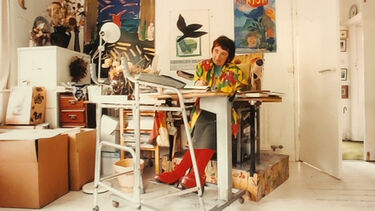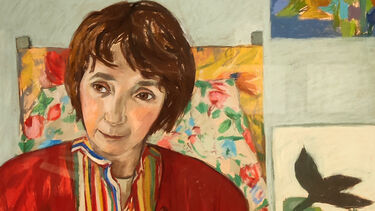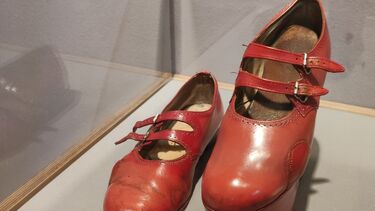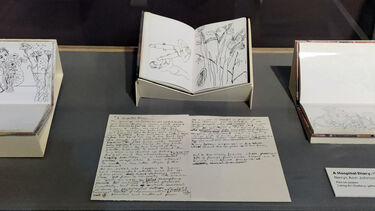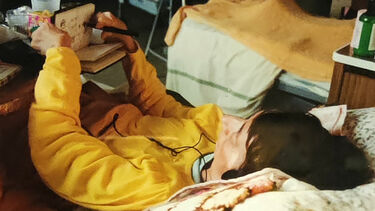Blog post #5 Nerys Johnson: Disability and Practice
By Louise Atkinson, Artist-in-Residence
During my recent visit to Newcastle, I had the opportunity to see the Nerys Johnson: Disability and Practice exhibition at Laing Art Gallery. It was interesting to consider how an exhibition might be curated to explore disability and access, not just in terms of content and audience access requirements, but also to highlight the ways that access needs shape a disabled artist’s process, becoming visible in the resulting work.
Nerys Ann Johnson (1942–2001) had a dual career as both an artist and a curator. She began her curatorial career as Keeper of Fine Art at Laing Art Gallery in 1968 before becoming Keeper-in-Charge at the Durham Light Infantry Museum and Arts Centre (DLI). At the DLI, she introduced an ambitious programme of contemporary art exhibitions alongside its military collections, bringing internationally renowned artists such as Bridget Riley and Henry Moore to the North East.
The exhibition, curated in partnership with Rachel Boyd, a Collaborative Doctoral Award student from Northumbria СŷÊÓƵ, included material from Johnson’s archive and collection. Her varied approaches to painting, drawing, and printmaking were directly shaped by her lived experience of rheumatoid arthritis, which she was diagnosed with at two years old.
The retrospective featured a mix of photographs, archival materials, and Johnson’s own artworks, sketchbooks, and letters, alongside a specially commissioned film by Surface Area Dance Theatre entitled ‘Down Among The Plants’. It was structured both chronologically and thematically, showcasing different aspects of her practice while interspersing museum-style displays of the tools and aids she used, such as her orthopaedic shoes, alongside highlights of specific projects she undertook throughout her career.
Photographs of Johnson in her adapted studio chair showed how she had hand-painted it with her signature floral motifs. Her work involved a network of facilitators, including friends, artists, and mentees, who supported her practice in various ways. Among them was Suzie Balasz, who documented Johnson’s studio and whose photographs provided the inspiration for paintings of the artist. These images formed part of Johnson’s personal archive, capturing both her artistic process and the access she required to sustain it.
Early work from the 1960s explored the relationship between plant forms and abstracted figures which were later reimagined as etchings. A stay at Dryburn Hospital, between November 1993 and February 1994, inspired a series of sketches and diary entries, which, while not realised as finished works, emphasised how chronic illness, disability and care were integrated into her practice. This was also evident in her paintings of access workers, who often supported her in return for the opportunity to be mentored. Johnson’s sketches often referenced the exact date of production, a method she used to highlight the chronic nature of her disability and the passing of time between periods of creative activity.
Johnson’s meticulous self-archiving, which she began in 1990, offered an valuable insight into the interplay between access, artistic practice, and institutional support. Letters from curators, such as one from Bristol Art Gallery discussing her request for a bed to be installed in the gallery where she was working, reveal the negotiations required to ensure the conditions for her practice. A press cutting with the headline ‘Woman heads staff at military museum’ in reference to her appointment at the DLI further underscored intersectional forms of access, encompassing not only disability but also gender parity within cultural institutions.
This concern with how access shapes artistic production resonates with Cripping Breath’s exploration of creative practice by disabled and chronically ill artists. Like Johnson’s self-archiving, one of our aims in Cripping Breath is to foreground the often invisible conditions underpinning artistic work, from the time-dependent nature of creative energy to the material and spatial adjustments necessary to sustain a practice. Johnson’s work, with its documentation of fluctuating capacity and interdependent support structures, provides an important precedent for thinking through the relationship between art and disability.
The exhibition continues until 6th December 2025.

